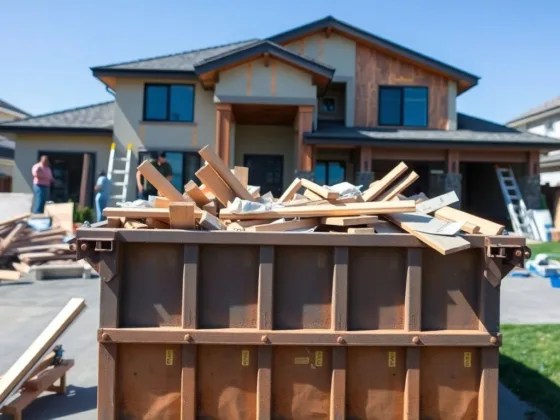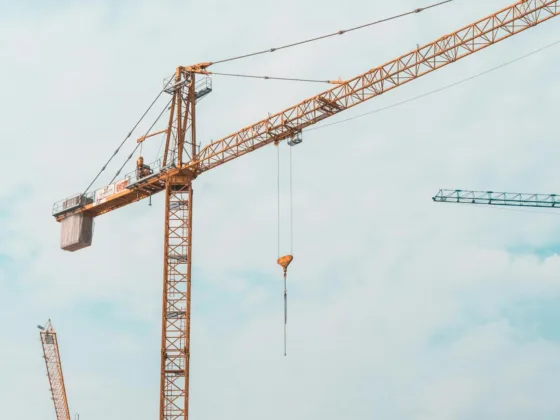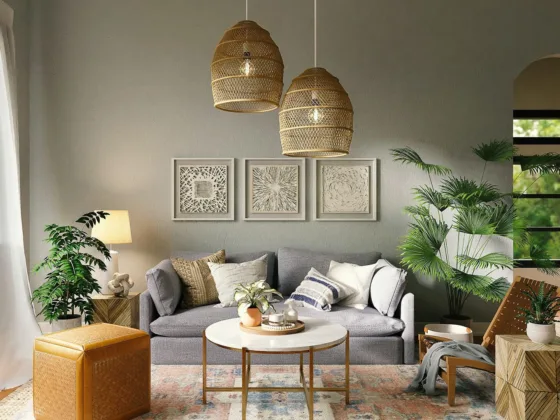Table of Contents Show
Building a luxury custom home is no small feat. It requires careful planning, selecting the right partners, and paying attention to detail. With the right luxury custom home builder, your vision can come to life. This guide shares essential tips to help you navigate the process smoothly.
Finding the Right Luxury Custom Home Builder
Defining Your Needs and Budget: Setting Realistic Expectations
- Understand construction costs: On average, building a luxury home costs between $200 to $500 per square foot, depending on the location and materials used.
- Set a detailed budget: Include not only construction costs but also landscaping, interior design, and furnishings. Always factor in a contingency of 10-20% for unexpected expenses.
- Prioritize features: Create a list of must-have features versus nice-to-haves. This way, you can make informed decisions when it comes to costs.
RELATED: Building a House: Understanding the New Home Building Process
Researching and Vetting Potential Builders: Due Diligence is Key
- Review portfolios: Look at past projects to get a sense of the builder’s style and quality.
- Check credentials: Ensure the builder is licensed, insured, and has positive references from previous clients.
- Conduct interviews: Ask potential builders detailed questions about their experience, project management style, and how they handle challenges.
Negotiating Contracts and Agreements: Protecting Your Interests
- Clear contracts: Ensure contracts detail all aspects of the project, including timelines, costs, and materials.
- Know common clauses: Be aware of clauses related to change orders, payment schedules, and liability.
- Legal counsel: It’s wise to have a lawyer review any agreements before you sign.
RELATED: Building a Custom Home: 4 Things You Need to Do Before You Meet Your Builder
The Design and Planning Phase: Collaboration and Vision
Developing Your Design Vision: Collaboration with Architects and Designers
- Create mood boards: Gather images, colors, and materials that inspire your vision.
- Work with architects: Collaborate closely with architects to transform your ideas into workable blueprints.
- Maintain open communication: Keep discussions ongoing to ensure everyone stays aligned on the vision.
Material Selection and Specifications: Quality and Craftsmanship
- Choose quality materials: Invest in durable and sustainable materials that add long-term value.
- Luxurious finishes: Consider high-end cabinetry, countertops, and flooring options that reflect your style.
- Detailed specifications: Clearly outline every detail to minimize misunderstandings during construction.
Permitting and Approvals: Navigating Regulatory Hurdles
- Understand the permitting process: Research what permits are required in your area and prepare documentation early.
- Address potential delays: Be proactive in communicating with local authorities to avoid setbacks.
- Common challenges: Be aware of potential zoning or environmental issues that might arise and prepare solutions.
The Construction Process: Monitoring Progress and Communication
Regular Site Visits and Communication: Staying Informed
- Frequent communication: Schedule regular meetings with your builder to stay updated on progress.
- Effective strategies: Use video calls or in-person meetings to discuss updates and concerns openly.
- Document progress: Take photos and notes during site visits to have a detailed record of the construction phase.
Managing Change Orders and Unexpected Issues: Flexibility and Problem Solving
- Adapt to changes: Be ready to face changes during construction and approach them with a flexible mindset.
- Handle change orders: Maintain a clear process for approving any alterations to the original plan or budget.
- Real-world examples: When unforeseen issues like structural adjustments arise, stay calm and work collaboratively with your builder to find solutions.
Quality Control and Inspections: Ensuring Excellence
- Regular quality checks: Schedule inspections at various stages to ensure quality construction.
- Independent inspections: Consider hiring a third-party inspector for unbiased evaluations.
- Address problems immediately: Be proactive in spotting and resolving any issues right away.
Completing Your Project: Final Walkthrough and Beyond
Final Walkthrough and Inspection: A Thorough Review
- Importance of walkthroughs: Conduct a detailed final walk-through to ensure everything meets your expectations.
- Identify issues: Make a list of any remaining concerns or items for correction.
- Inspection checklist: Create a checklist covering major elements like plumbing, electrical work, and finishing touches.
Moving In and Settling In: Enjoying Your New Home
- Post-construction maintenance: Understand warranty details and schedule any necessary upkeep.
- Settling tips: Take your time organizing and personalizing your space to reflect your lifestyle.
- Resources for support: Look for local services for ongoing maintenance and improvements.
Building a Lasting Relationship: Post-Construction Support
- Maintain communication: Keep in touch with your builder for any future needs or questions.
- Long-term benefits: Good relationships with builders may lead to quicker responses for future projects.
- Builder quote: “The best relationships are built on trust. It’s a journey, not just a project.” – Renowned luxury home builder.
Conclusion: Your Dream Home Awaits
Building a luxury custom home involves a significant investment of time and resources. By carefully choosing a reputable builder, planning meticulously, and fostering open lines of communication throughout, your dream home can become a reality. Prioritize clear contracts, diligent oversight, and proactive communication to ensure the project meets your vision and expectations.
FAQs
When choosing a luxury custom home builder, look for their experience, portfolio of past projects, client testimonials, and their ability to communicate effectively. It’s also important to ensure they are licensed, insured, and have a good reputation in the community.
The timeline for building a custom home can vary widely based on the project’s complexity, size, and location. Generally, you can expect the process to take anywhere from 6 months to over a year, including design, permitting, and construction phases.
Yes, many builders allow for changes during construction, but it’s important to communicate these changes as early as possible. Keep in mind that changes can affect timelines and budgets, so it’s best to discuss any adjustments with your builder.
A custom home is tailored to the specific needs and preferences of the homeowner, while a luxury home typically refers to high-end features, finishes, and materials. A custom home can be luxury, but not all custom homes are necessarily luxury homes.
To stay within budget, it’s important to have a clear understanding of your financial limits upfront. Work closely with your builder to establish a detailed budget, prioritize your must-haves, and keep an open line of communication throughout the building process to avoid unexpected costs.
Common pitfalls include not having a clear vision of what you want, failing to communicate effectively, underestimating costs, and not researching the builder thoroughly. Taking the time to plan and ask questions can help you avoid these issues and ensure a smoother building experience.










